Abstract
Data from 1,392 children ages 1 to 10, who were participants in the U.S. Department of Agriculture 1987-88 Nationwide Food Consumption Survey, were examined to determine how their diets compared with current dietary recommendations and to identify those sociodemographic factors associated with the greatest risk for not meeting the recommendations. Vitamin A, vitamin E, vitamin C, calcium, iron, and zinc were the nutrients most often consumed below recommended levels. Percentage of calories from fat and saturated fat and mean sodium intakes were above recommended levels for the majority of the children. Of the total sample, 81 percent met guidelines for cholesterol intakes. Multiple correlation regression analysis was used to determine the effect of the following factors on the children's nutrient intakes: geographic region, degree of urbanization, race, household size and income, age, education, and employment status of the male and female head of household. Age and sex of the child were entered as control variables. Level of urbanization affected the most nutrient intake variables, followed by race. Living in a rural area and being black were significant predictors for higher intakes of total fat, saturated fat, cholesterol, and sodium. Mean annual household income had no significant effect on any of the diet quality measures. Many of the children in the sample, however, participated in Federal food and nutrition programs that provided additional resources for food.
Full text
PDF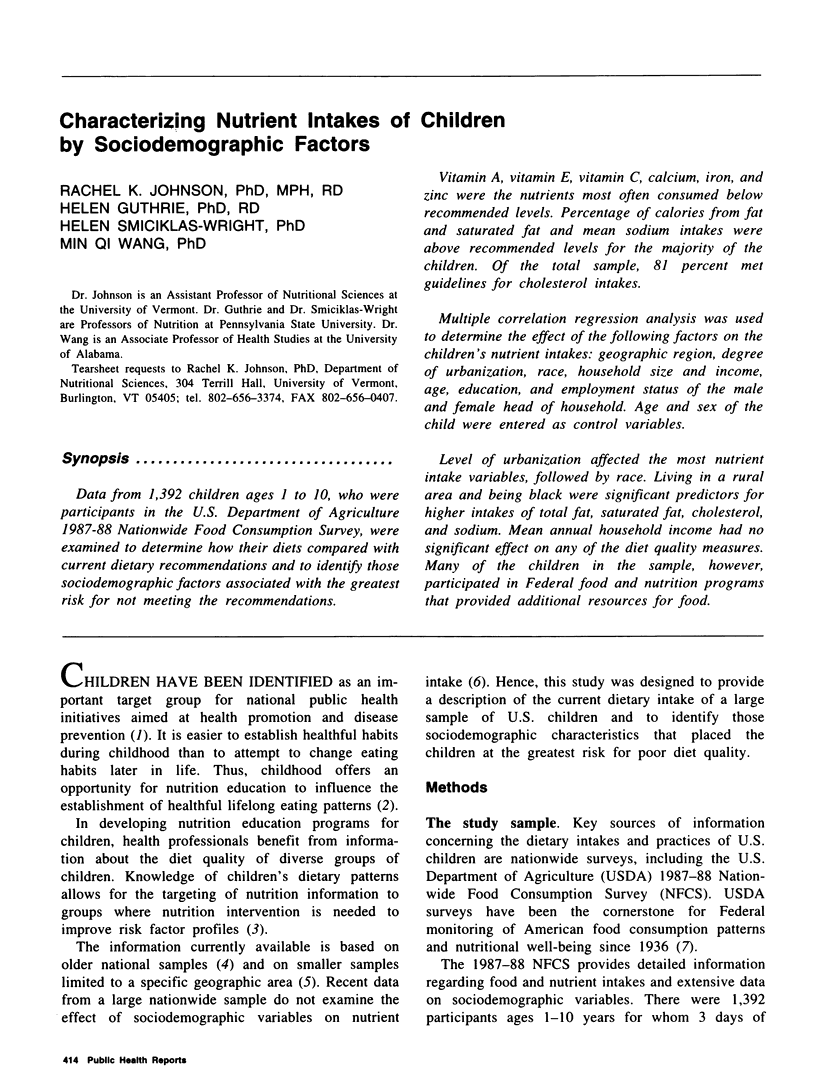
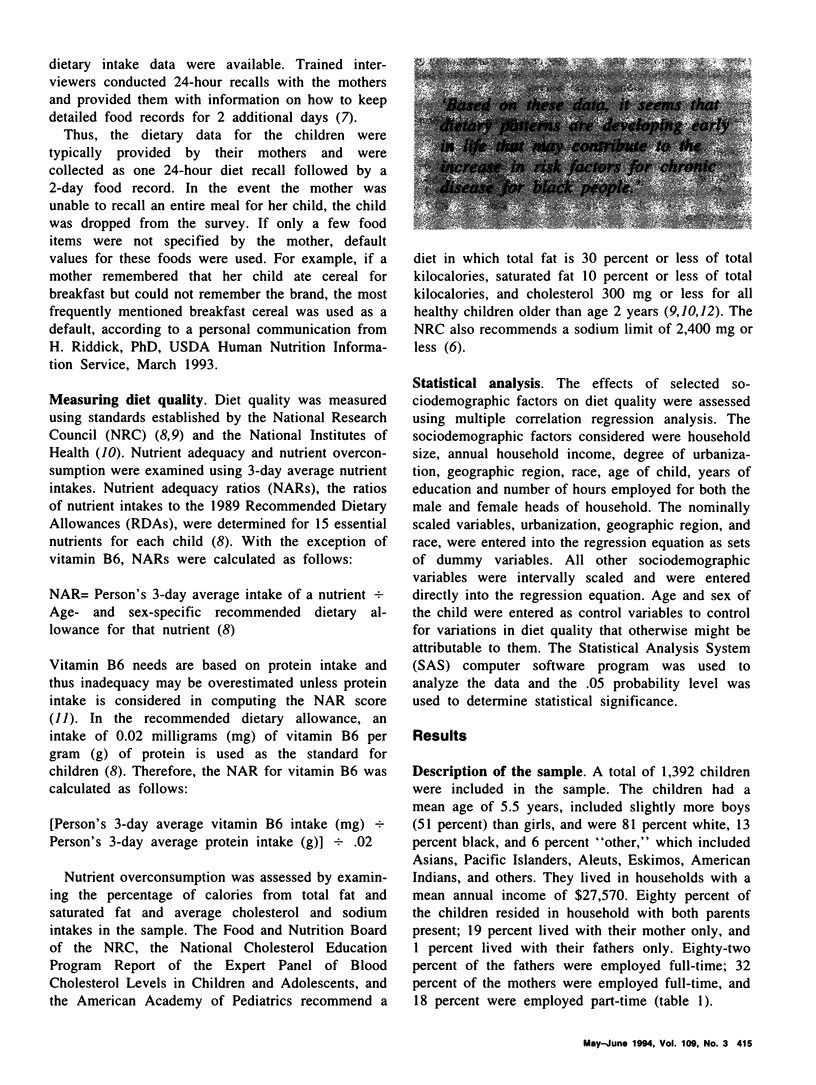
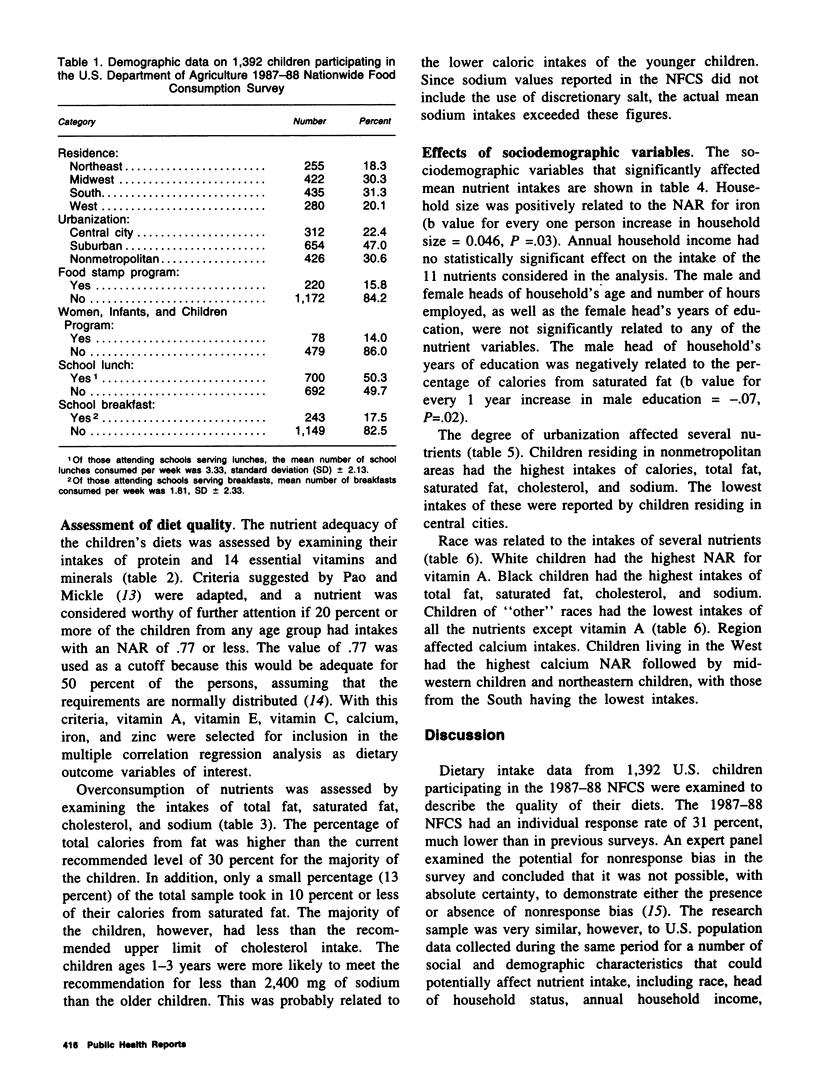
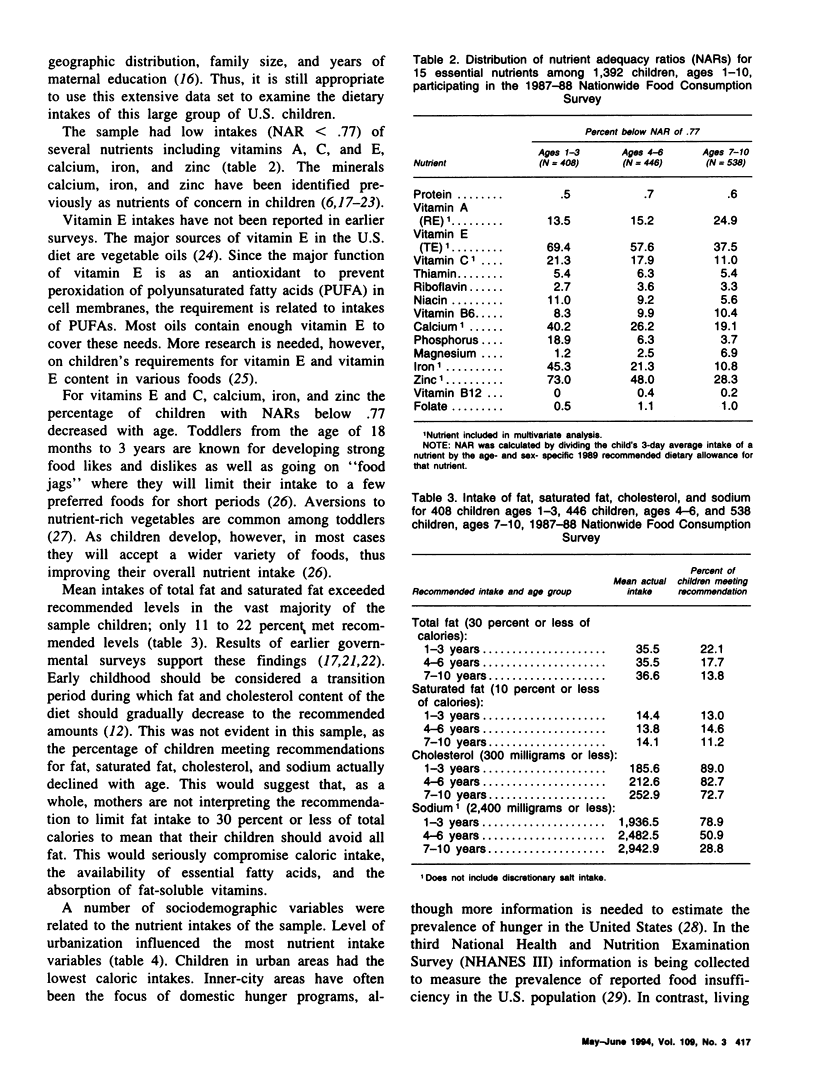
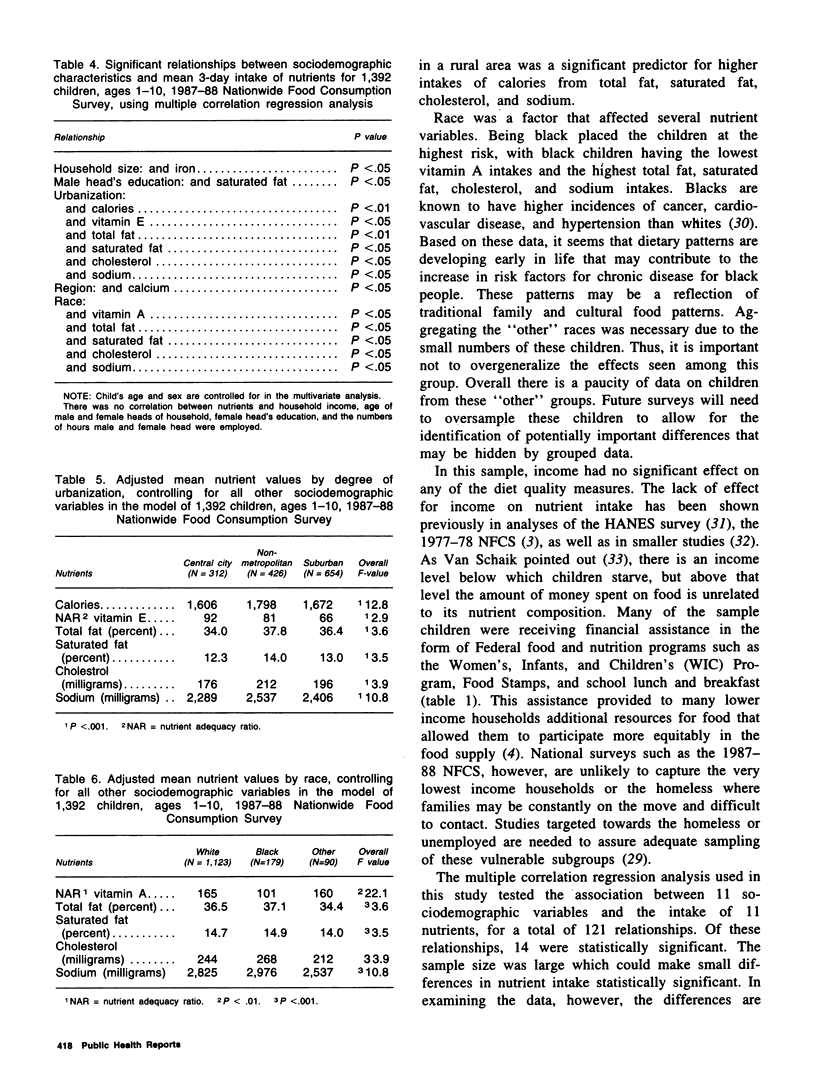

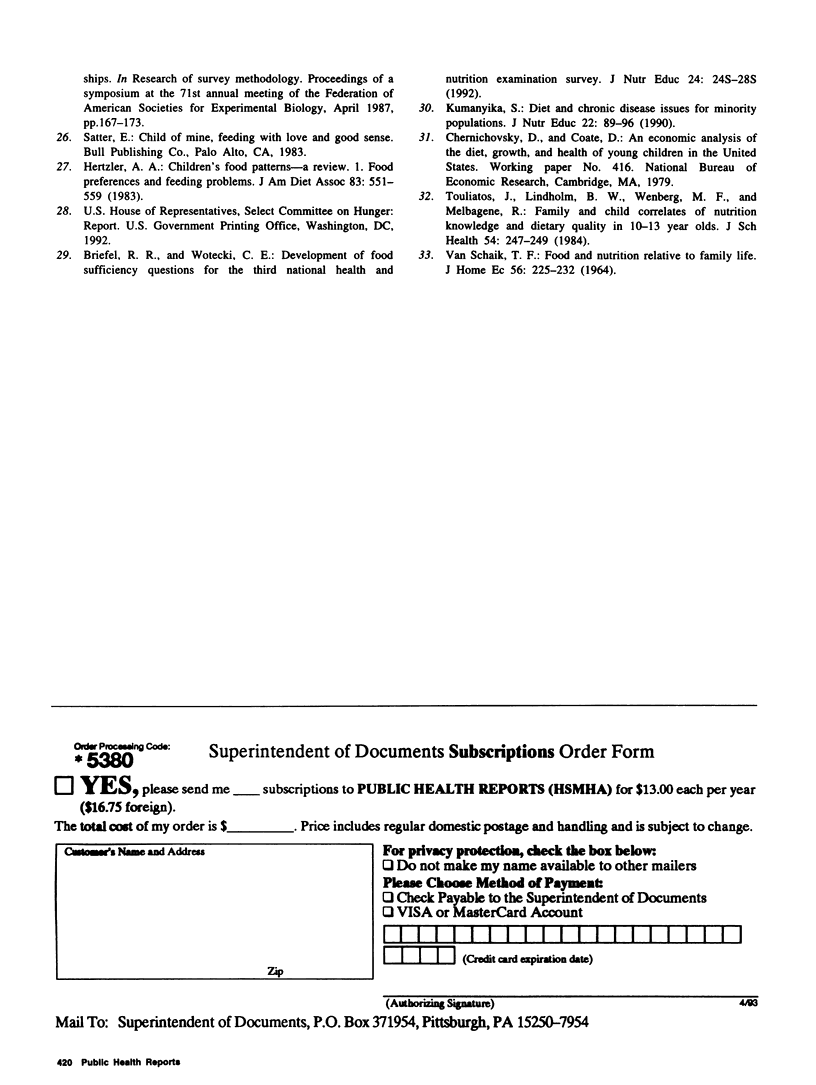
Selected References
These references are in PubMed. This may not be the complete list of references from this article.
- Albertson A. M., Tobelmann R. C., Engstrom A., Asp E. H. Nutrient intakes of 2- to 10-year-old American children: 10-year trends. J Am Diet Assoc. 1992 Dec;92(12):1492–1496. [PubMed] [Google Scholar]
- Cronin F. J., Krebs-Smith S. M., Wyse B. W., Light L. Characterizing food usage by demographic variables. J Am Diet Assoc. 1982 Dec;81(6):661–673. [PubMed] [Google Scholar]
- Fischer D. R., Morgan K. J., Zabik M. E. Cholesterol, saturated fatty acids, polyunsaturated fatty acids, sodium, and potassium intakes of the United States population. J Am Coll Nutr. 1985;4(2):207–224. doi: 10.1080/07315724.1985.10720077. [DOI] [PubMed] [Google Scholar]
- Frank G. C., Webber L. S., Nicklas T. A., Berenson G. S. Sodium, potassium, calcium, magnesium, and phosphorus intakes of infants and children: Bogalusa Heart Study. J Am Diet Assoc. 1988 Jul;88(7):801–807. [PubMed] [Google Scholar]
- Hertzler A. A. Children's food patterns--a review: I. Food preferences and feeding problems. J Am Diet Assoc. 1983 Nov;83(5):551–554. [PubMed] [Google Scholar]
- Morgan K. J., Stampley G. L., Zabik M. E., Fischer D. R. Magnesium and calcium dietary intakes of the U.S. population. J Am Coll Nutr. 1985;4(2):195–206. doi: 10.1080/07315724.1985.10720076. [DOI] [PubMed] [Google Scholar]
- Nicklas T. A., Webber L. S., Thompson B., Berenson G. S. A multivariate model for assessing eating patterns and their relationship to cardiovascular risk factors: the Bogalusa Heart Study. Am J Clin Nutr. 1989 Jun;49(6):1320–1327. doi: 10.1093/ajcn/49.6.1320. [DOI] [PubMed] [Google Scholar]
- Splett P. L., Story M. Child nutrition: objectives for the decade. J Am Diet Assoc. 1991 Jun;91(6):665–668. [PubMed] [Google Scholar]
- Touliatos J., Lindholm B. W., Wenberg M. F., Ryan M. Family and child correlates of nutrition knowledge and dietary quality in 10-13 year olds. J Sch Health. 1984 Aug;54(7):247–249. doi: 10.1111/j.1746-1561.1984.tb08922.x. [DOI] [PubMed] [Google Scholar]
- Windham C. T., Wyse B. W., Hansen R. G., Hurst R. L. Nutrient density of diets in the USDA Nationwide Food Consumption Survey, 1977-1978: I. Impact of socioeconomic status on dietary density. J Am Diet Assoc. 1983 Jan;82(1):28–34. [PubMed] [Google Scholar]


